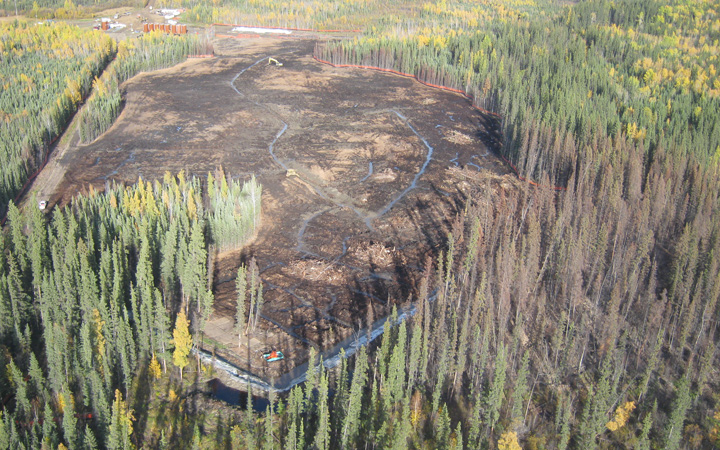
Alberta oil and gas companies could avoid cleanup costs by installing solar panels: government report
An Alberta government-commissioned report suggests oil and gas site companies may be able to install...
A pipeline owned by Paramount Resources Ltd. released an estimated 100,000 litres of crude oil and 190,000 litres of produced water near Zama City, in northwest Alberta, according to an April 11 incident report filed with the Alberta Energy Regulator.
The release was discovered after company personnel looked into a low-pressure alarm from the company’s leak detection system, the incident report states. The emergency status of the spill ended April 16.
The report says that although “the release was initially believed to be minor” further investigation shows the spill to be around 290,000 litres and has impacted an area of 200 metres by 200 metres.
“The pipeline was isolated and depressurized, and clean-up is underway,” the incident report states. “No reported impacts to wildlife.”
The cause of the spill is still under investigation, Paul Wykes, spokesperson with Paramount Resources, told DeSmog Canada.
The spill is located approximately 10 kilometres northeast of Zama City, Wykes said.
The remote pipeline is part of a network in the Zama area obtained by Paramount Resources when it acquired Apache Corp for $487 million in 2017.
Between May 2013 and January 2014 Apache’s pipeline infrastructure was plagued by a series of incidents that included one of the largest recent pipeline spills in North America.
In June 2013, a pipeline released 15.4 million litres of oil and toxic produced water into muskeg, contaminating a 42-hectare span of boreal forest.

Apache pipeline spill, June 2013. Photo: Apache Corp.
“Every plant and tree died” James Ahnassay, chief of the Dene Tha First Nation, told the Globe and Mail at the time.
The spill, which continued undetected for nearly one month, was originally reported to be only 9.5 million litres in volume due to an inaccurate meter reading, the company said.
Produced water can contain hydrocarbons, salt, metals, radioactive materials and chemicals uses in the oil extraction process.
An investigation later revealed the pipeline, which was only five years old at the time of the spill, cracked due to corrosion stress, caused by a pinhole leak. The company was later fined $16,500 for the spill and the Alberta Energy Regulator ordered a third-party audit of the company’s aging pipeline infrastructure.
Oil and gas exploration has been occurring in the Zama area since the 1950s.
In October 2013, Apache announced it had detected another pipeline leak after it had released an estimated 1.8 million litres of oil, chemicals and contaminated water over a three-week period.
In a statement of facts agreed to by Apache concerning the 1.8 million litre spill, the company admitted it failed to install protective fencing around the pipeline and that evidence indicated a bison may have rubbed up against the pipe, crushing it.
Two additional Apache spills occurred between 2013 and 2014, one smaller spill near Zama and one near Whitecourt, Alberta, which released nearly 2 million litres of produced water.
It was later determined Apache failed to install proper pressure valves on the pipeline near Whitecourt.
In 2016 Apache pled guilty to violations of the Pipeline Act and the Environmental Enhancement and Protection Act as was fined $350,000 by the Alberta Energy Regulator.
In response to the April 11, 2018 spill, Paramount “immediately initiated its emergency response plan,” Wykes said.
“A team of personnel is on site as containment, clean-up and delineation efforts continue. There is no danger to the public,” he said.
Content for Apple News or Article only Get the inside scoop on The Narwhal’s environment and climate reporting by signing up for our free newsletter. This...
Continue reading
An Alberta government-commissioned report suggests oil and gas site companies may be able to install...

This story about a lawsuit involving First Nations in northern Ontario has deep roots — in...

At a crucial point in their research, biologists are scrambling to find new support for...

